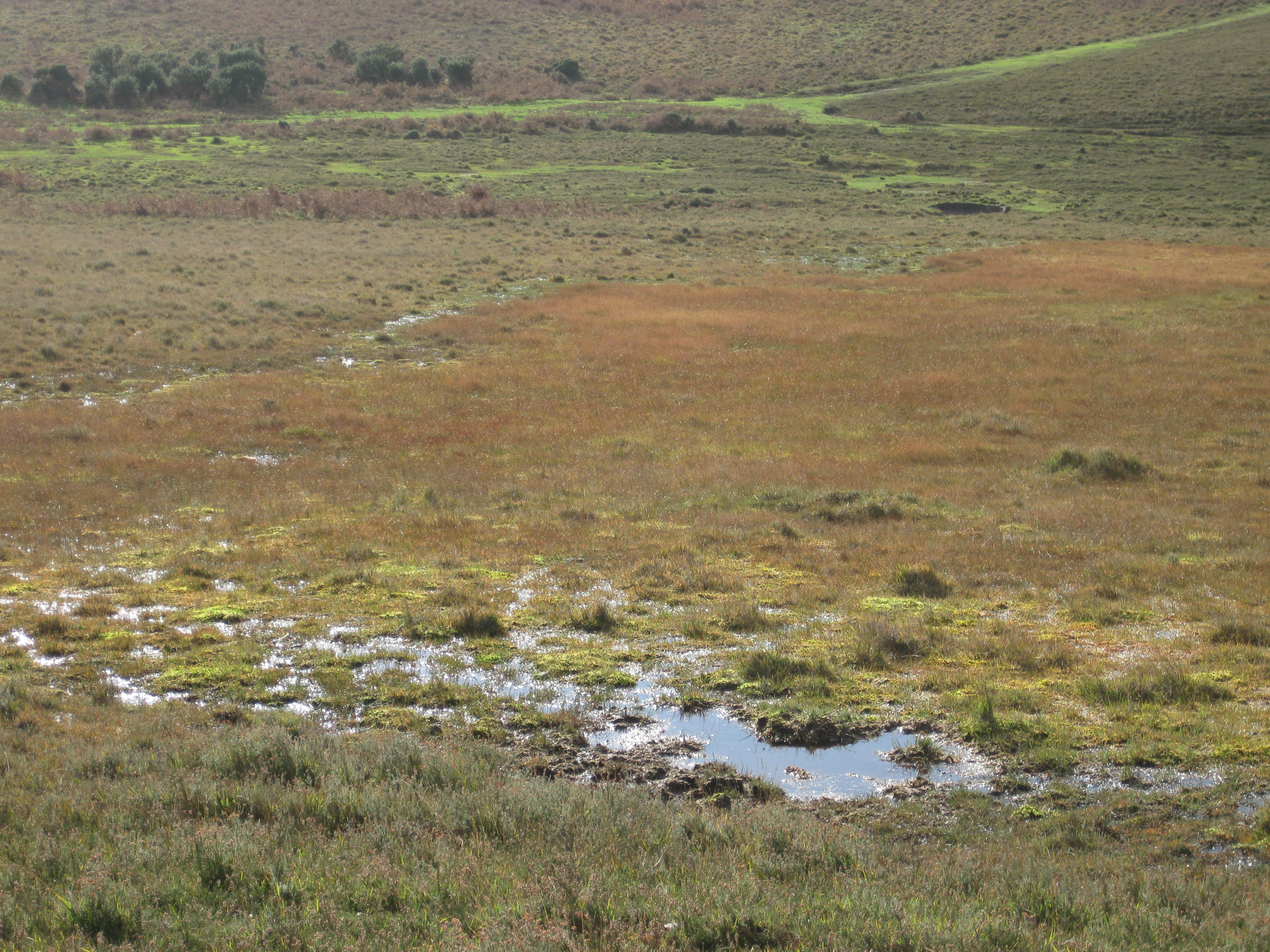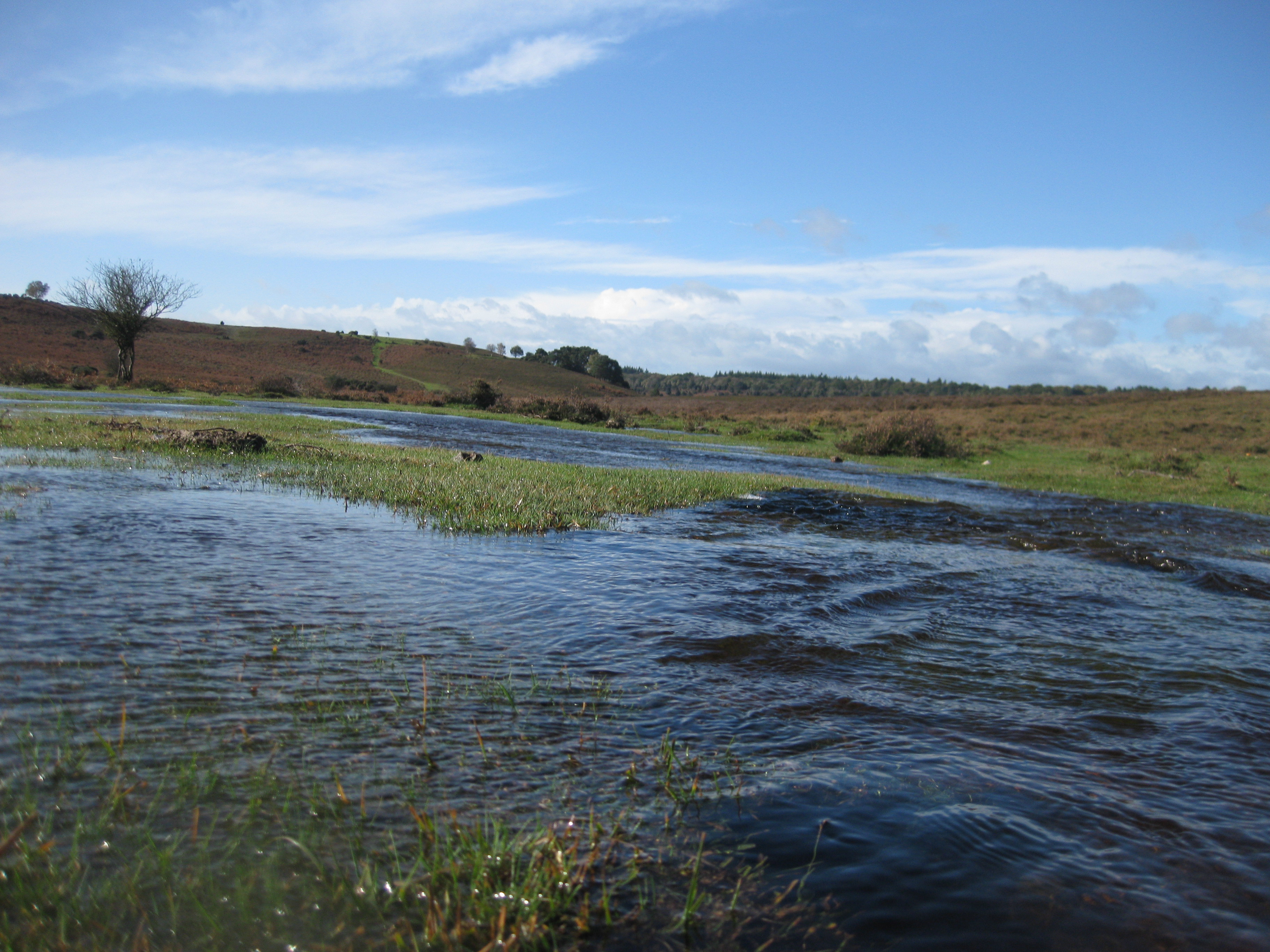
The bogs and valley mires are important New Forest habitats.
The downpours of late (January 2016) have created lakes in my fields and paddocks and my home-kept ponies are looking decidedly soggy and miserable. The ground beside the field gates has been churned into mud, as the ponies parade up and down the fence line each afternoon in their impatience to be fed. I have to push the barrow loads of hay further and further up the hill in order to deposit the piles onto ground that isn’t poached. On the flip side though, my free-roaming ponies out on the open Forest continue in good health and have kept much of the condition that they gained on the good summer grass. The recent temperatures have been so mild that they’ve not yet had to use their fat reserves to stay warm. Provided the inclement weather is not unduly prolonged they should remain well. The wet weather doesn’t seem to affect the free-roaming ponies too badly as they know all the tricks for avoiding the worst of it.
Danger of bogs and mires
Of course the recent heavy rainfall will mean that the watercourses across the New Forest will be filling up. The Forest catchment is fed by a series of unconnected steams that begin in areas of bog and heathland mire. These bogs and mires are areas of precious habitat that can be deceptive looking, even in summer. Unwary walkers, horse-riders or careless Forest animals have been trapped in their murky depths whilst trying to cross what otherwise looks like ordinary open heathland. Hampshire Fire and Rescue Service are regularly called out to attend such incidents and frequently urge people using the Forest to remain on the footpaths to avoid a similar fate. In times past, before the tracks and pathways were so helpfully laid and maintained by the authorities, strangers to the Forest would be warned of the dangers of traversing the Forest and the bogs in particular. The reason was (and still remains) because the free-roaming ponies and cattle make tracks through their territories that lead to the best grazing, shelter and water. To the uninitiated human traveller these tracks can resemble footpaths that simply lead nowhere and can get them hopelessly lost. Travellers of old were therefore told to follow carriage tracks, rather than hoof prints, especially when traversing the bogs and mires. The ‘wild’ Forest ponies can safely travel where ridden or driven horses can’t. If there were no signs of where carriage wheels had been on the opposite side of a bog even people on foot were advised not to attempt a crossing.
Crossing a swollen ford
In modern times too it is often helpful to have an indicator that shows the way when the reliability of the path to be travelled is in doubt. On a recent trip to visit a fellow commoner, under grey skies and in slamming rain, as I crossed the swollen ford into the village a group of cyclists were eyeing up the flood waters and clearly fancied their chances of getting across on their bikes. On seeing me approach in my 4X4 they decided to watch my progress to get an idea of the depth of the water. As I drove slowly but determinedly through the rapids a small bow-wave formed over the vehicle’s bumper. The audience observed my manoeuvre with an almost scientific interest. With their calculations complete the decision was quickly reached that they ought to dismount and walk their bikes over the nearby footbridge. It was a good job they did. If the depth hadn’t put them off crossing the ford the speed that the water was travelling certainly should have. According to the Royal Life Saving Society two feet (60.96cm) of water moving at enough speed can wash away a car, whilst only six inches (15.24cm) can take you completely off your feet. After safely crossing the ford via the footbridge the little group eventually pedalled off disconsolately but soaked with nothing more treacherous than the falling rain.

The New Forest catchment is fed by unconnected streams that begin in areas of bog and heathland mire.


You must be logged in to post a comment.